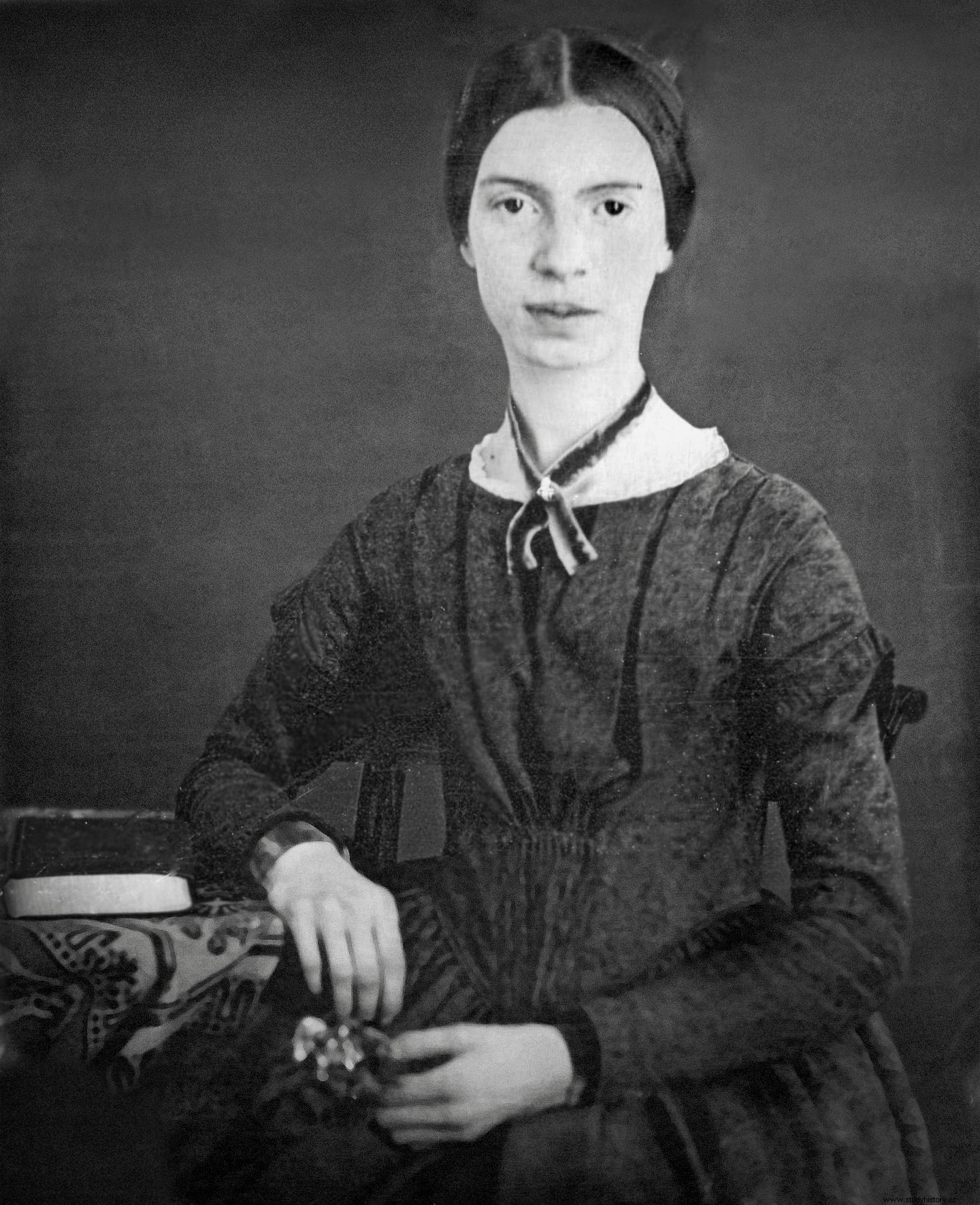Emily Elizabeth Dickinson (1830 – 1886) was an American poet. His work, considered a classic of American literature, was not published during his lifetime.
A wise childhood
 Daughter of Edward Dickinson, lawyer and senator, and Emily Norcross of Monson, Emily Elizabeth Dickinson was born on December 10, 1830 in Amherst (Massachusetts). She has an older brother, William Austin, and a younger sister, Lavinia Norcross. Attracted by music and in particular the piano, Emily is a well-behaved child who benefits from a quality education. Her mother is distant and she is closer to her father.
Daughter of Edward Dickinson, lawyer and senator, and Emily Norcross of Monson, Emily Elizabeth Dickinson was born on December 10, 1830 in Amherst (Massachusetts). She has an older brother, William Austin, and a younger sister, Lavinia Norcross. Attracted by music and in particular the piano, Emily is a well-behaved child who benefits from a quality education. Her mother is distant and she is closer to her father.
In 1840, Emily and Lavinia entered Amherst College, which had opened to girls two years earlier. Emily learns classical literature, Latin, botany, geology, history, mathematics. In 1844, the death of a cousin and close friend, who succumbed to typhus, traumatized her to such an extent that her parents sent her for a while to stay with relatives in Boston. On her return, she resumed her studies. In 1845, a wave of religious conversions took place in Amherst, particularly among Emily's relatives, who experienced a religious phase for a few years.
Poetess
Emily Dickinson finished her studies at Amherst Academy on August 10, 1847, then spent ten months at Mount Holyoke Seminary, before deciding to leave. In March 1848, she returned to her parents and devoted herself to the household chores of the family. Passionate about botany, she maintained the garden of the family property and, throughout her life, collected many specimens of dried flowers in a large herbarium. At the same time, the Dickinsons became friends with Benjamin Franklin Newton, a young lawyer who introduced Emily to the writings of William Wordsworth, Ralph Waldo Emerson and Lydia Maria Child. Benjamin, whom she considers a tutor, and these readings will have a great influence on her. Influenced by her favorite authors, she herself began to write poetry.
In the mid-1850s, chronic illnesses confined Emily's mother to bed and her two daughters had to take care of her. Emily finds herself confined to her home, with increasingly heavy domestic responsibilities, until her mother's death in 1882. She then begins to collect, correct and clean up poems written over the years. Until 1865, she will write forty booklets containing nearly eight hundred poems, which will be discovered at her death. In the late 1850s, she befriended Samuel Bowles, proprietor and editor of the Springfield Republican , who will publish several of Emily's poems in her journal.
A secluded life
Gradually, Emily Dickinson withdrew from the world and ceased many of her social activities; in parallel, she writes more and more. In 1862, she wrote to Thomas Wentworth Higginson, a literary critic, asking for his opinion on her writings. The critic is convinced of his talent and advises him to write more before publishing. His support will be very important for Emily, with whom he will correspond until his death. By the mid-1860s, however, overwhelmed with household chores and bereavement, her writing pace slowed. She then lived more and more recluse, barely leaving the property and refusing to see her visitors face to face. Her family protects this physical loneliness, which does not prevent Emily from maintaining relationships through correspondence.
On June 16, 1874, Emily's father died of a stroke. Emily attends the funeral only through the half-open door of her room. She continues to write but stops organizing her poems and asks her sister Lavinia to burn her papers when she dies. Her mother died eight years later, on November 14, 1882. The following year, her youngest nephew died of illness and Emily could no longer recover from these successive bereavements. In 1885, illness confined her to bed for months, so much so that her brother canceled trips to stay at her bedside.
On May 15, 1886, Emily Dickinson finally died after a long illness, at the age of 55. While she was a very prolific poet, only a dozen of her poems were published during her lifetime. On his death, Lavinia discovered his collections of nearly eight hundred poems and the first volume was published in 1890. His works have not ceased to be published since.
